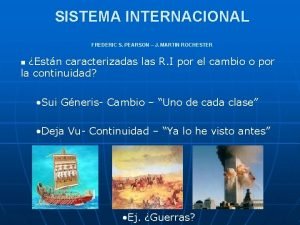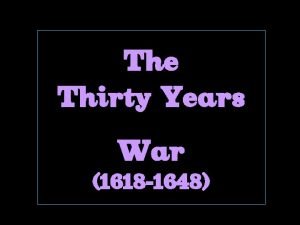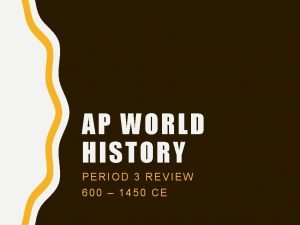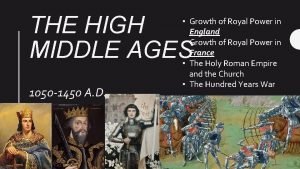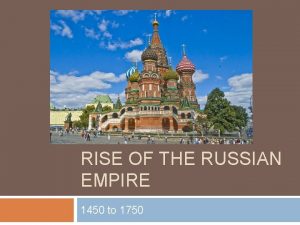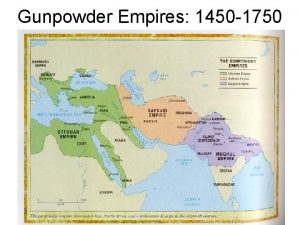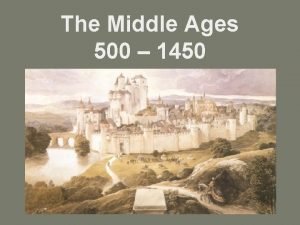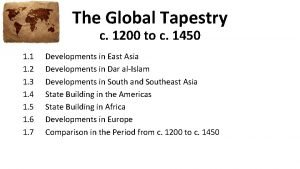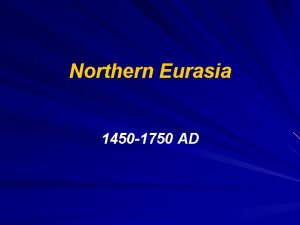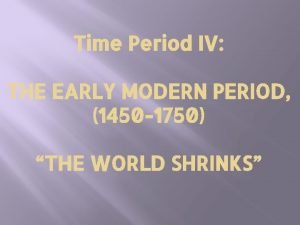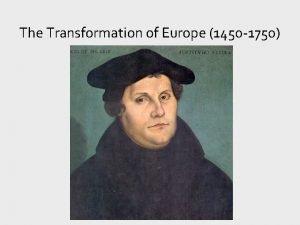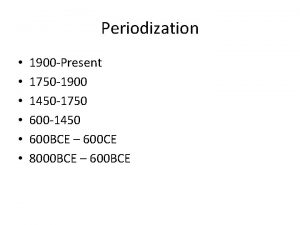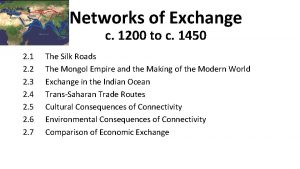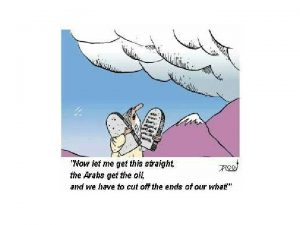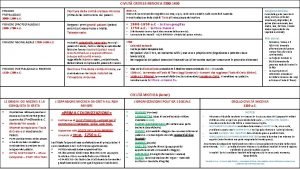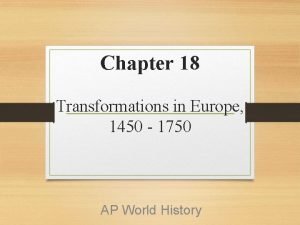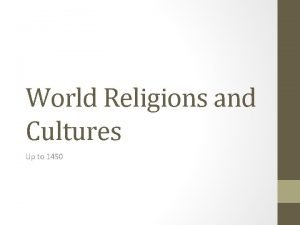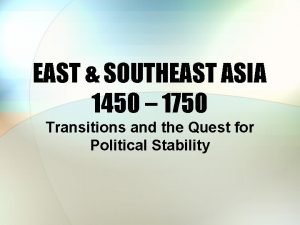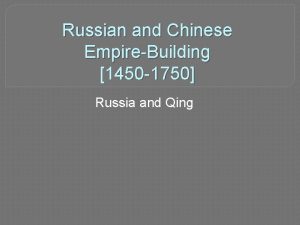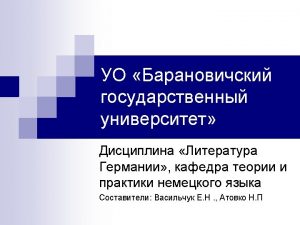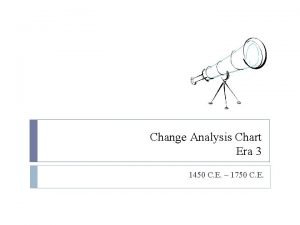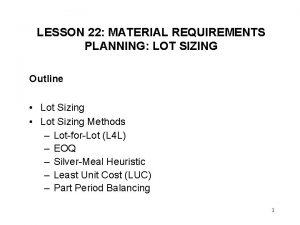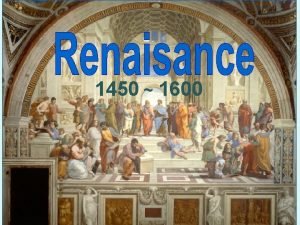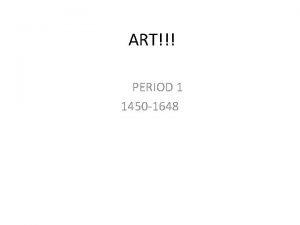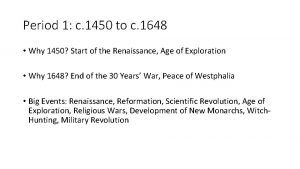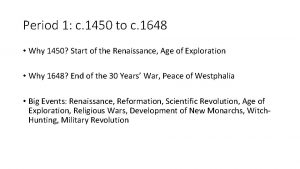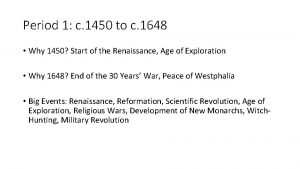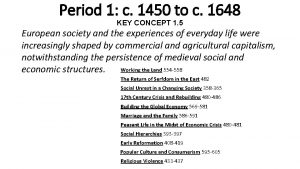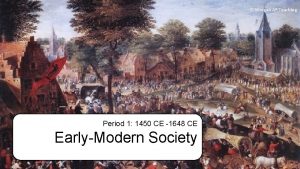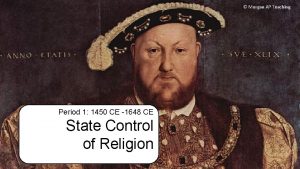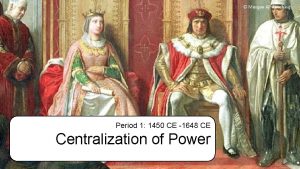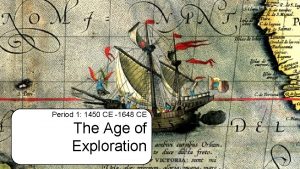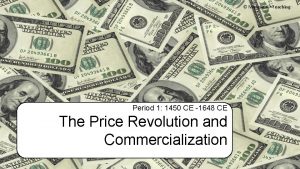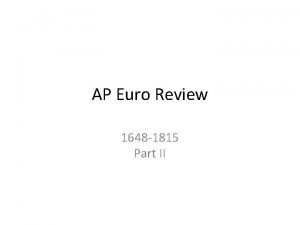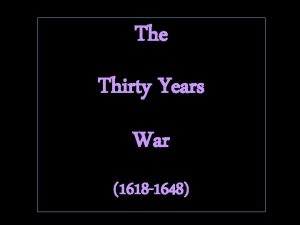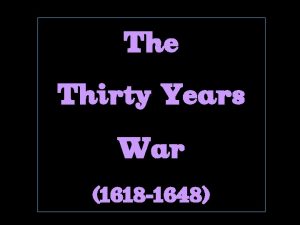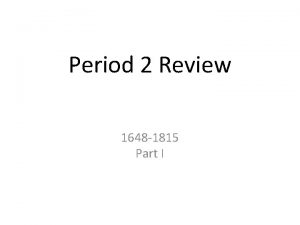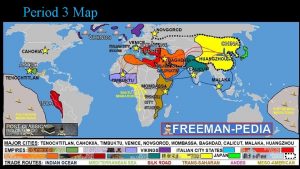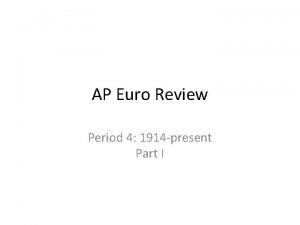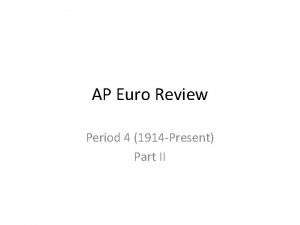AP EURO REVIEW Period 1 1450 1648 PART









































- Slides: 41

AP EURO REVIEW Period 1: 1450 -1648 PART II

English Reformation: Anglican Church, Henry VIII The Act of Supremacy, 1534 • Made King officially head of Church • Catholic lands confiscated (about 25% of all lands) Act of Succession, 1534 • All king’s subjects had to take an oath of loyalty to the king as the head of the Anglican Church • 1536: Pilgrimage of Grace: Statute of the Six Articles, 1539 • Anglican Church maintained most of the Catholic doctrines (7 sacraments, transubstantiation, celibacy for clergy)

Tudor Succession Edward VI (r. 1547 -1553) • • England adopts Calvinism during his reign New doctrines: – Salvation by faith – Denial of transubstantiation – 2 sacraments: baptism & communion Mary Tudor (r. 1553 -1558) • Tried to impose Catholicism • Rescinded reformation legislation • Marian exiles: Protestants fled England fearing persecution •

Elizabeth I (r. 1558 -1603) the “Virgin Queen” Elizabethan Settlement • • Protestant views – Politique: navigated compromise between Anglican and Protestantism She and Parliament required conformity to Anglican Church, but people allowed to worship privately Thirty-Nine Articles, 1563 • Defined creed of Anglican Church


The Counter Reformation Pope Paul III (1534 -1549) • Most important pope in reforming Church and challenging Protestantism – Council of Trent (1545 -1563) Established Catholic dogma for the next 400 years • Equal validity of Scripture, Church tradition, and writings of Church fathers. • Salvation by both good works and faith • Validation of all 7 sacraments • Monasticism, celibacy of clergy and purgatory reaffirmed • Approved the Index of Forbidden Books: • Reforms: curtailed sale of indulgences, church offices; bishops more control over clergy, seminaries established

New Religious Orders Jesuits founded 1540 • Ignatius Loyola (1491 -1556) • 3 goals: – Reform the Church through education – Spread the Gospel to pagans – Fight Protestantism The Inquisition • Jesuits oversaw both Spanish and Italian Inquisitions beginning in 1542 • Persecution of Jews throughout Europe increased

Baroque Art and Music • Began in Catholic Reformation countries to teach in a concrete and emotional way and demonstrate the glory and power of the Catholic Church • Spread to Protestant countries

1. 2. 3. Baroque Art, 17 th Century Italian Baroque artists embraced a more dynamic and complex aesthetic. …dramatic theatricality, grandiose scale, and elaborate ornateness…characterized… the art and architecture. Baroque art production further suggests the role art played in supporting the aims of the [Catholic] Church. Artemisia Gentileschi, Judith Slaying Holofernes, 1614 -20, Uffizi, Florence, Italy. -Gardner’s Art Through the Ages, 11 th Ed. Bernini, David, 1623, Galleria Borghese, Rome. Bernini, Trevi Fountain, 1629 -1762, Rome. Bernini, baldacchino, 1623 -24, St. Peter’s, Vatican City.

Baroque Sculpture and Architecture Italy: Gian Lorenzo Bernini (1598 -1680) • A Counter Reformation Catholic • Inspired by Caravaggio • Sculptor • Greatest imprint on city of Rome than any other artist Piazza Navona: Fountain of the Four Rivers

Bernini Baldacchino Saint Peter’s Square Trevi Fountain David

Saint Teresa in Ecstasy, 1647 -52

Italian Baroque Painting 1. 2. 3. Baroque art reaches out to people and provokes action; designed to give spontaneous personal experience. Baroque paintings are filled with dramatic movement, striking contrasts of light and dark, vivid colors, and earthly realism. Baroque artists depicted the heroic acts of martyrs and saints to inspire the lower classes to accept their own suffering and not lose faith. Caravaggio (1571 -1610) • First important painter of Baroque period • Highly emotional scenes • Use of tenebrism • Considered a realist in an age of idealists • Criticized for use of ordinary, gritty people as models even for religious paintings

Caravaggio Bacchus David with the Head of Goliath

Caravaggio Basket of Fruit Crucifixion of Saint Peter

Northern European Baroque Art Peter Paul Rubens (15771640) • • northern Europe, the Netherlands was divided into two parts: the Northern Netherlands (present day Netherlands) and Southern Netherlands (present day Belgium and part of France), each usually referred to as Holland (North) and Flanders (South). Rubens and his workshop dominated the art of Flanders with the creation of dramatic and powerful religious altarpieces and portraits of the ruling families of Italy and France. Emphasized color and sensuality (nudes as Roman goddesses, nymphs, saints, and angels); melodramatic contrasts; monumental size Mainly Christian subjects Rubenshuis, Antwerp

Rubens The Fall of Man, 1628 -29 The Three Graces, 1635

Rembrandt (1606 -1669) Dutch artist during Dutch Golden Age • Painted in Amsterdam – tolerant city, valued personal privacy, thus unknown if he was Catholic or Protestant • Personal tragedies: wife died, 3 of 4 children died, bankrupt • Known for self-portraits (more than 90), very prolific • Narrow color range: browns, reds, beige. Pinpoint style with light to illuminate a point • Painterly style: layers of paint Self Portrait, 1658

Rembrandt: The Night Watch 1642

Rembrandt Anatomy Lesson of Dr. Tulp 1632 Return of the Prodigal Son, 1669

Baroque Art: Spain Diego Velasquez, 1599 -1660 • Court painter for King Philip IV – Favorite – Moved into palace • Spanish Golden Age • Important portrait artist • Loose brush technique Las Meninas, 1656

Velasquez Philip IV 1632 Los Borrachos 1628

Baroque Music (ca. 1600 -1750) • Highly complex, polyphonic musical texture – Rich, expressive • Use of Church organ, harpsichord • Improvisation Composers: • Bach (1685 -1750) • Handel (1685 -1759) • Vivaldi (1678 -1741)

Results of the Reformation • Unity of Western Christianity shattered – Northern Europe Protestant: most of Germany, Austria and the Netherlands, Scandinavia, Britain, and much of France • Religious enthusiasm rekindled • Church abuses remedied: simony, pluralism, immoral and uneducated clergy removed • Led to rise of religious wars in Europe over the next century

The Wars of Religion 1559 -1648 Issues: • Spain seeking to crush Protestantism in western Europe and Islam in Mediterranean • French Catholics trying to stop Huguenots • HRE trying to re-impose Catholicism in Germany • Calvinist Netherlands trying to break away from Spain • England: Civil War between Puritans and Anglicans • • Spain under Phillip II (1556 -1598) “Golden Age” Battle of Lepanto, 1571 – Considered the turning point in preserving “Christian” Europe from Turkish advance The Dutch Revolt: Spain vs. Netherlands – William of Orange (1533 -1584) led 17 provinces against the Spanish Inquisition – Formation of the Dutch Republic in 1581 Spain vs. England: Defeat of the Spanish Armada, 1588

French Wars of Religion (at least 9 from 1562 -1598) • • After the death of Henry II (1559) a power struggle between three noble families for throne: Valois, Bourbon, and Guise St. Bartholomew’s Day Massacre, 1572 War of the Three Henry’s • Henry of Navarre converted to Catholicism “Paris vaut bien une messe” and becomes Henry IV (Henry of Navarre) r. 1589 -1610 Edict of Nantes, 1589: Established freedom of religion France under regency: Cardinal Richelieu, • Cardinal Mazarin, Louis XIV, the Fronde Revolts

Thirty Years’ War (1618 -1648) • 1. 2. 3. 4. • Failure of the Peace of Augsburg (1555) Bohemian Phase (1618 -1625) – Defenestration of Prague Danish Phase (1625 -1629) Swedish Phase (1629 -1635) French Phase (1635 -1648) Peace of Westphalia, 1648 ❖ France + Sweden benefit ➢France: annexes Alsace + Lorraine ➢Sweden: Territories in Holy Roman Empire ❖ United Provinces / Swiss Conf. independent ❖ Habsburg Spain isolated ❖ Last war originally fought solely on religious basis

English Civil War, 1642 -1649 • James I (r. 1603 -1625) – Catholic, divine right • Charles I (r. 1625 -1649) • Cavaliers v. Roundheads – Oliver Cromwell – The Interregnum (16491660) • The Restoration, 16601685 – Charles II (1660 -1685) • James II (1685 -1688)

The Glorious Revolution, 1689 • William and Mary • English Bill of Rights

The Age of Exploration – 16 th Century • The fall of Greek Constantinople to the Ottoman Turks in 1453 permanently and profoundly changed international affairs • Wealthy Europeans demanded luxury goods from Asia: spices, opiates, and silks • Getting the goods past the Turks cost more money, raising the price of commodities dramatically

The Atlantic Five • • • Portugal Spain England France The Netherlands

Portugal • Motives: economic + religious • Prince Henry the Navigator (13941460) • Bartholomew Diaz (1450 -1500) • Vasco de Gama (1469 -1525) • Amerigo Vespucci (1454 -1512) • BRAZIL – 17 th century: African slaves imported for coffee, cotton, and SUGAR production – Significant racial mixing Portuguese map by Lopo Homem (c. 1519) showing the coast of Brazil and natives extracting brazilwood, as well as Portuguese ships.

Technology • Cartography • Astronomy • Instruments: – – Magnetic compass Geometric quadrant Mariner’s astrolabe Cross staff • Ships: – Caravels (Portugal) – Lateen sail and rope riggings – Axial rudder – Gunpowder and cannons

Portuguese discoveries and explorations: first arrival places and dates; main Portuguese spice trade routes in the Indian Ocean (blue); territories claimed during King John III rule (c. 1536) (green)

Treaty of Tordesillas, 1494

Christopher Columbus • Proposed a trade route to Asia by going west thus bypassing Turks • Ferdinand Isabella financed expedition along with Genoese merchants

Bartholomew de las Casas (14741566) A Brief Account of the Destruction of the Indies (1542) Criticized treatment of Amerindians


England: late to exploration • John Cabot (1425 -1500) • Jamestown 1607 • Far more English came to NW comparatively France • Jacques Cartier (1491 -1557) • Quebec 1608 Dutch Republic (Netherlands) • Dutch E. India Co. founded 1602 • Expelled Portuguese from Ceylon and Indonesia (Spice Islands)


“New” Monarchs: c. 1460 -1550 • Consolidated power and created the foundation for Europe’s first modern nationstates in FRANCE, ENGLAND, and SPAIN – Reduction of nobles’ power through taxation, confiscation of lands, and use of mercenary armies or standing armies – Reduction of political power of clergy – Created more efficient bureaucracies – Increased public debt by taking out loans from merchant-bankers
 Branches of catholic church
Branches of catholic church Sistema internacional clasico
Sistema internacional clasico Bohemian phase
Bohemian phase Ap world history 600 to 1450 review
Ap world history 600 to 1450 review Chapter review motion part a vocabulary review answer key
Chapter review motion part a vocabulary review answer key Mughal empire 1450 to 1750
Mughal empire 1450 to 1750 1450 ad
1450 ad Best buy st. george utah
Best buy st. george utah Silver trade 1450 to 1750
Silver trade 1450 to 1750 Decline of russian empire 1450 to 1750
Decline of russian empire 1450 to 1750 Saq examples
Saq examples Land based empires 1450 to 1750
Land based empires 1450 to 1750 500/1450
500/1450 The global tapestry
The global tapestry Japan 1450-1750
Japan 1450-1750 World map 1450
World map 1450 Europe 1450
Europe 1450 1750+600
1750+600 Adopalen
Adopalen 1250 bc
1250 bc 2300-1450
2300-1450 Europe map 1750
Europe map 1750 Toreador fresco at knossos, c.1450-1400 bc
Toreador fresco at knossos, c.1450-1400 bc Religion in 1450 to 1750
Religion in 1450 to 1750 Southeast asia 1450 to 1750
Southeast asia 1450 to 1750 St basil's cathedral ap world history
St basil's cathedral ap world history Renaissance history event
Renaissance history event Bürgerlicher realismus historischer hintergrund
Bürgerlicher realismus historischer hintergrund Change analysis chart 1450 to 1750
Change analysis chart 1450 to 1750 The development of children 7th edition
The development of children 7th edition A&p flix activity: propagation of an action potential
A&p flix activity: propagation of an action potential Absolute refractory period and relative refractory period
Absolute refractory period and relative refractory period Critical period vs sensitive period
Critical period vs sensitive period Critical vs sensitive period examples
Critical vs sensitive period examples Critical period vs sensitive period
Critical period vs sensitive period This period lasted from approximately 1775 - 1825
This period lasted from approximately 1775 - 1825 Period 4 metallic 27 electrons
Period 4 metallic 27 electrons Period of activism in the philippines literature
Period of activism in the philippines literature Stability period vs measurement period
Stability period vs measurement period Trustee period and royal period
Trustee period and royal period Written records in history
Written records in history Silver-meal
Silver-meal

